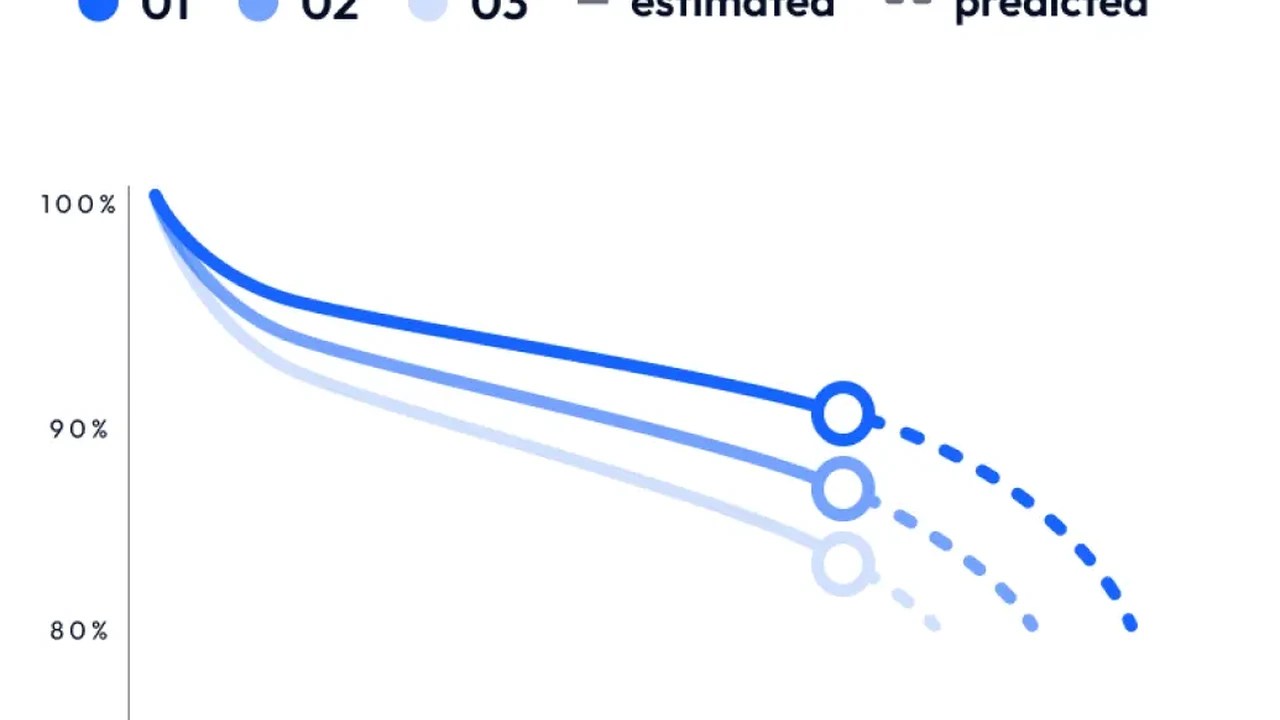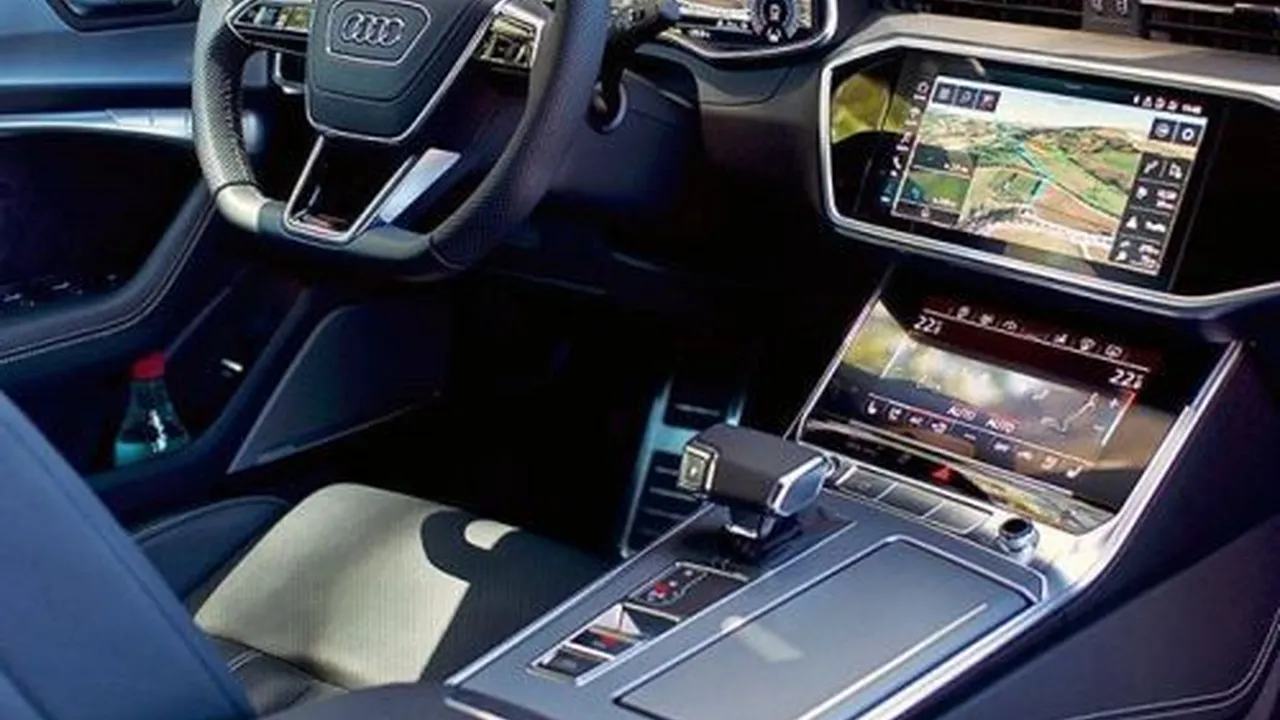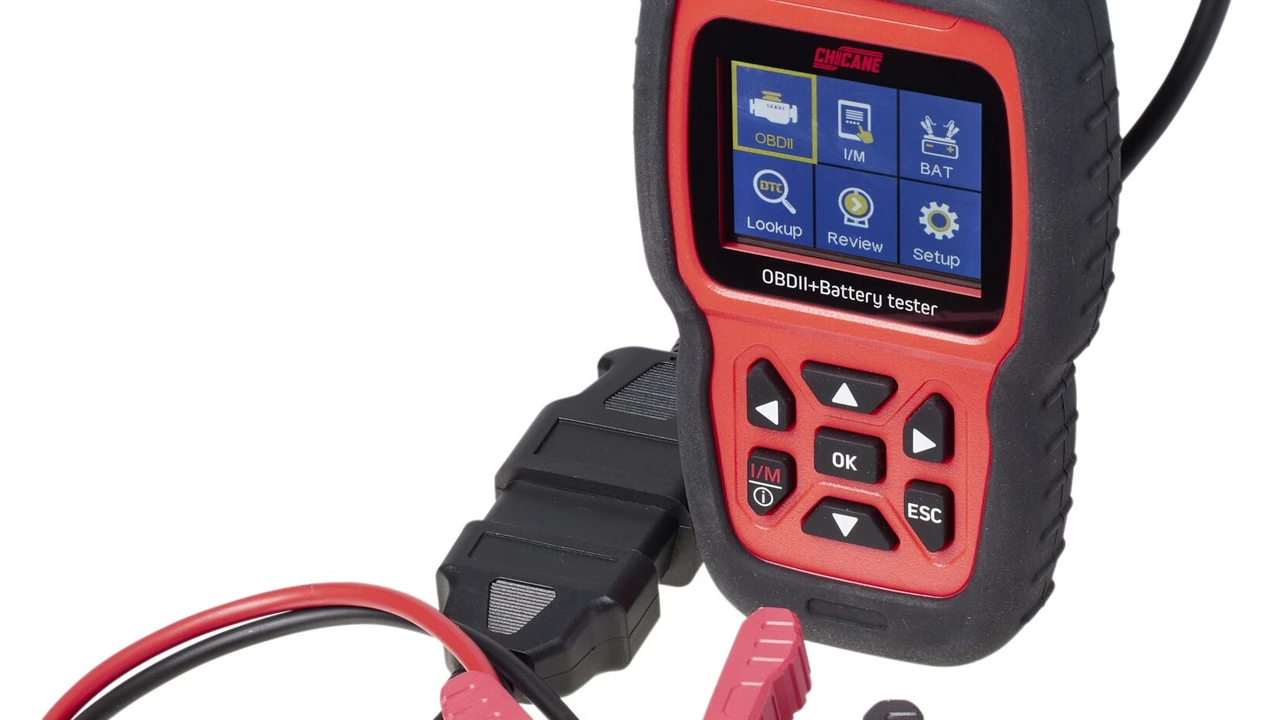Best Practices for EV Battery Health Monitoring
Tools and methods for monitoring the health and performance of your electric vehicle battery.

Tools and methods for monitoring the health and performance of your electric vehicle battery.
Best Practices for EV Battery Health Monitoring
Hey EV enthusiasts! Ever wondered how to keep tabs on your electric vehicle's most vital component – its battery? Just like our own health, an EV battery needs regular check-ups to ensure it's performing optimally and to maximize its lifespan. Understanding how to monitor your EV battery's health isn't just for tech geeks; it's crucial for every EV owner. This guide will walk you through the best practices, tools, and methods to keep your battery in tip-top shape, ensuring you get the most out of your electric ride.
Why EV Battery Health Monitoring Matters for Longevity and Performance
Think of your EV battery as the heart of your vehicle. Its health directly impacts your car's range, performance, and even its resale value. Over time, all batteries experience some degradation, meaning their capacity to hold a charge diminishes. This is a natural process, but certain factors can accelerate it, such as extreme temperatures, frequent fast charging, and consistently charging to 100% or discharging to 0%. By actively monitoring your battery's health, you can identify potential issues early, adjust your charging habits, and take proactive steps to mitigate degradation. This not only extends the life of your battery but also ensures your EV consistently delivers the range and power you expect. Plus, when it comes time to sell, a well-maintained battery with documented health can significantly boost your car's value.
Understanding Key EV Battery Health Metrics and Indicators
Before diving into the tools, let's get familiar with the key metrics that indicate your EV battery's health. These are the numbers you'll be looking at to understand what's going on under the hood:
State of Health SOH What You Need to Know
State of Health (SOH) is arguably the most important metric. It's usually expressed as a percentage, representing the current usable capacity of your battery compared to its original design capacity. For example, if your battery had an original capacity of 100 kWh and now only holds 90 kWh, its SOH is 90%. A higher SOH means a healthier battery. Most EVs will show a gradual decline in SOH over years and mileage. Significant drops can indicate an issue.
Battery Capacity and Range Degradation Tracking
Closely related to SOH is the actual battery capacity. As SOH drops, so does your usable capacity, which directly translates to reduced range. Tracking your real-world range over time can give you a practical sense of degradation. If your car used to get 300 miles on a full charge and now only gets 270 under similar conditions, you're seeing range degradation in action.
Internal Resistance and Voltage Sag Indicators
Internal resistance is a measure of how much the battery resists the flow of current. As batteries age, their internal resistance tends to increase, leading to less efficient power delivery and more heat generation. Voltage sag, or the temporary drop in voltage under heavy load, can also be an indicator of increased internal resistance or a weakening battery. While these are more technical metrics, some advanced tools can provide insights into them.
Temperature Management and Its Impact on Battery Life
Temperature is a huge factor in battery health. Both extremely hot and extremely cold temperatures can accelerate degradation. Your EV's Battery Management System (BMS) actively manages temperature, but monitoring battery temperatures (especially during charging and discharge) can help you understand if your car is effectively cooling or heating the pack. Consistent overheating, for instance, is a red flag.
Built-in EV Battery Health Monitoring Systems and Dashboards
Good news! Most modern EVs come with some level of built-in battery health monitoring. Your car's infotainment system or digital dashboard often provides basic information. Let's explore what you can typically find:
Manufacturer Provided Data and In-Car Displays
Many manufacturers offer a 'Battery Health' or 'Battery Status' screen within the car's menu. This might show your current SOH, estimated range, and sometimes even a graph of recent charging sessions. For example, some Tesla models show a 'Maximum Battery Capacity' percentage, which is essentially SOH. Nissan Leaf models often display 'bars' indicating battery health, with 12 bars being new and fewer bars indicating degradation. Check your owner's manual or explore your car's settings to find these displays.
Smartphone Apps from EV Manufacturers for Remote Monitoring
Beyond the in-car display, most EV manufacturers provide companion smartphone apps. These apps are incredibly useful for remote monitoring. You can often check your current charge level, estimated range, charging status, and even pre-condition your battery (warm it up or cool it down) before driving or charging. While they might not always show a precise SOH percentage, consistent monitoring of your estimated range and charging speeds through these apps can give you a good sense of your battery's performance over time.
Third-Party Tools and OBD2 Scanners for Deeper EV Battery Insights
For those who want to dive deeper than what the manufacturer provides, third-party tools and OBD2 scanners are your best friends. These can pull more detailed data directly from your car's onboard diagnostics system.
OBD2 Dongles and Bluetooth Adapters for EV Diagnostics
An OBD2 dongle is a small device that plugs into your car's OBD2 port (usually located under the dashboard). These dongles communicate with your smartphone or tablet via Bluetooth or Wi-Fi. They act as a bridge, allowing apps to read data from your car's computer. You can find these on Amazon or other electronics retailers. Popular choices include the Veepeak OBDCheck BLE (around $30-40 USD) or the OBDLink MX+ (around $100-140 USD), which offers faster data transfer and broader compatibility. The Veepeak is a great budget-friendly option for casual users, while the OBDLink MX+ is more robust for enthusiasts or professionals.
Specialized EV Battery Health Apps for Android and iOS
Once you have an OBD2 dongle, you'll need an app to interpret the data. Here are some top recommendations, along with their typical pricing and use cases:
LeafSpy Pro for Nissan Leaf Owners
If you own a Nissan Leaf, LeafSpy Pro (Android, iOS - around $15-20 USD) is an absolute must-have. It's specifically designed for the Leaf and provides an incredible amount of detail about your battery, including SOH, individual cell voltages, temperature, and even the number of quick charges and L2 charges. It's invaluable for tracking degradation and diagnosing issues. It works with most generic OBD2 dongles, but some users report better compatibility with specific ones like the OBDLink LX.
Car Scanner ELM OBD2 for Multi-Brand EV Monitoring
Car Scanner ELM OBD2 (Android, iOS - Free with in-app purchases for Pro features, around $5-10 USD) is a more general-purpose OBD2 app that supports a wide range of vehicles, including many EVs. While it might not offer the hyper-specific battery details of LeafSpy for a Leaf, it can still pull useful data like battery voltage, temperatures, and sometimes even estimated SOH for models like the Chevy Bolt, Hyundai Kona EV, and Kia Niro EV. It's a good starting point if you own a non-Leaf EV and want to explore basic battery metrics. It works well with most generic OBD2 dongles.
Torque Pro for Android Users with Custom PIDs
Torque Pro (Android only - around $5 USD) is another powerful general-purpose OBD2 app. Its strength lies in its ability to add custom PIDs (Parameter IDs) for specific vehicles. This means that with the right PIDs (often found in online EV forums for your specific model), you can unlock very detailed battery data, including SOH, individual cell voltages, and more, for a variety of EVs like the Chevy Bolt, BMW i3, and even some Teslas (though Tesla's own API is often preferred for deeper dives). It requires a bit more setup but offers great flexibility. Works with most OBD2 dongles.
Tessie or Scan My Tesla for Tesla Owners
For Tesla owners, while OBD2 options exist, many prefer apps that leverage Tesla's API for direct data access. Tessie (Subscription based, around $5-10 USD/month) and Scan My Tesla (Android, iOS - around $10-20 USD, requires specific OBD2 adapter like the OBDLink MX+ and a Tesla-specific adapter cable, around $30-50 USD) are popular choices. Tessie offers a user-friendly interface with excellent long-term data tracking, including estimated SOH, charging efficiency, and driving efficiency. Scan My Tesla provides incredibly granular real-time data, including individual cell voltages, battery temperatures, and detailed charging statistics, making it a favorite for power users and those wanting to diagnose specific issues. Scan My Tesla requires a bit more hardware investment but offers unparalleled detail.
Advanced EV Battery Health Monitoring Techniques and Best Practices
Beyond just reading numbers, there are specific practices you can adopt to get the most accurate picture of your battery's health and to promote its longevity.
Consistent Data Logging and Trend Analysis
Don't just check your battery health once and forget about it. Consistent data logging is key. Use your chosen app to record data regularly – perhaps once a week, or after every few charging cycles. Over time, you'll build a valuable dataset that allows you to see trends in SOH, range, and other metrics. This trend analysis helps you identify if degradation is occurring faster than expected or if certain charging habits are having a negative impact.
Full Charge and Discharge Cycles for Calibration
While generally not recommended for daily use, occasionally performing a full charge (to 100%) and then driving down to a very low state of charge (e.g., 10-20%) can help recalibrate your car's BMS. The BMS learns the battery's true capacity by observing these full cycles. This doesn't improve battery health, but it can make the SOH readings and estimated range more accurate. Do this sparingly, perhaps once every few months, and avoid leaving the battery at 100% or very low for extended periods.
Monitoring Charging Habits and Their Impact
Your charging habits have a significant impact on battery health. Frequent DC fast charging (especially in hot weather) can accelerate degradation. Consistently charging to 100% and leaving it there, or regularly discharging to near 0%, are also not ideal. Aim to keep your battery between 20% and 80% for daily driving. Use your monitoring tools to see how different charging speeds and charge levels affect battery temperatures and SOH over time. Adjust your habits based on what you observe.
Temperature Management Strategies for Optimal Battery Life
As mentioned, temperature is critical. If your monitoring tools show consistently high battery temperatures, especially during charging or in hot climates, consider pre-conditioning your battery before charging (if your car supports it) or parking in the shade. In very cold weather, pre-conditioning before driving can also help. Some EVs have active thermal management systems that you can monitor to ensure they are working effectively.
Common EV Battery Health Myths Debunked
There's a lot of misinformation out there about EV batteries. Let's clear up a few common myths:
Myth 1: EV Batteries Die After 8 Years
This is a common misconception. While most manufacturers offer an 8-year/100,000-mile warranty on their batteries (guaranteeing a certain SOH, usually 70%), this doesn't mean the battery dies after that period. It simply means the warranty expires. Many EVs are still on the road with perfectly usable batteries well beyond 8 years, albeit with some degradation. The rate of degradation slows down significantly after the initial few years.
Myth 2: Fast Charging Kills Your Battery Instantly
While frequent fast charging can accelerate degradation compared to Level 2 charging, it doesn't 'kill' your battery instantly. Modern EVs have sophisticated BMS that manage fast charging to minimize stress on the battery. Think of it like eating fast food – a little bit is fine, but a steady diet isn't ideal. Use fast charging when you need it, but rely on Level 2 for daily charging whenever possible.
Myth 3: You Must Always Charge to 100% for Full Range
For daily driving, charging to 100% is generally not recommended, especially if you're not immediately driving. Keeping the battery at a very high state of charge for extended periods can stress the cells. Most manufacturers recommend charging to 80-90% for daily use and only charging to 100% when you need the full range for a long trip. This practice helps preserve battery health over the long term.
When to Seek Professional EV Battery Diagnostics and Service
While self-monitoring is great, there are times when you should seek professional help. If you notice any of the following, it's time to visit a certified EV service center:
Sudden or Significant Drop in Range or SOH
If your estimated range or SOH suddenly drops significantly (e.g., 10% or more in a short period) without any obvious reason, it could indicate a problem with a battery module or cell. This is not typical degradation and warrants investigation.
Consistent Warning Lights or Error Messages
Any battery-related warning lights on your dashboard (e.g., 'Check EV System' or a battery icon with an exclamation mark) should be taken seriously. These indicate that your car's BMS has detected an issue that needs professional attention.
Unusual Charging Behavior or Performance Issues
If your car is charging much slower than usual, or if you experience noticeable power loss or inconsistent performance, these could be signs of battery issues. A professional diagnostic can pinpoint the exact cause.
Preparing for EV Resale Value Assessment
If you're planning to sell your EV, having a professional battery health report can be a huge advantage. It provides transparency to potential buyers and can justify a higher resale price. Many dealerships or specialized EV service centers offer battery health checks that provide a certified SOH report.
By actively monitoring your EV battery's health and adopting smart charging and driving habits, you're not just extending the life of your car's most expensive component; you're also ensuring a more reliable and enjoyable electric driving experience. Happy motoring!
:max_bytes(150000):strip_icc()/277019-baked-pork-chops-with-cream-of-mushroom-soup-DDMFS-beauty-4x3-BG-7505-5762b731cf30447d9cbbbbbf387beafa.jpg)






